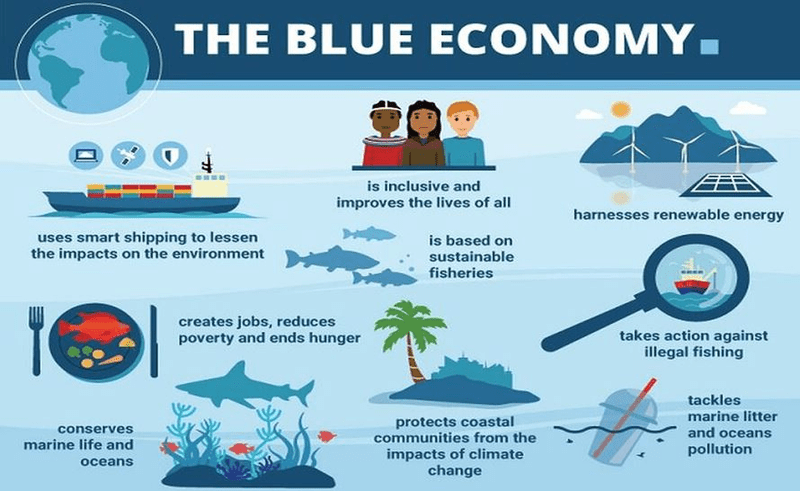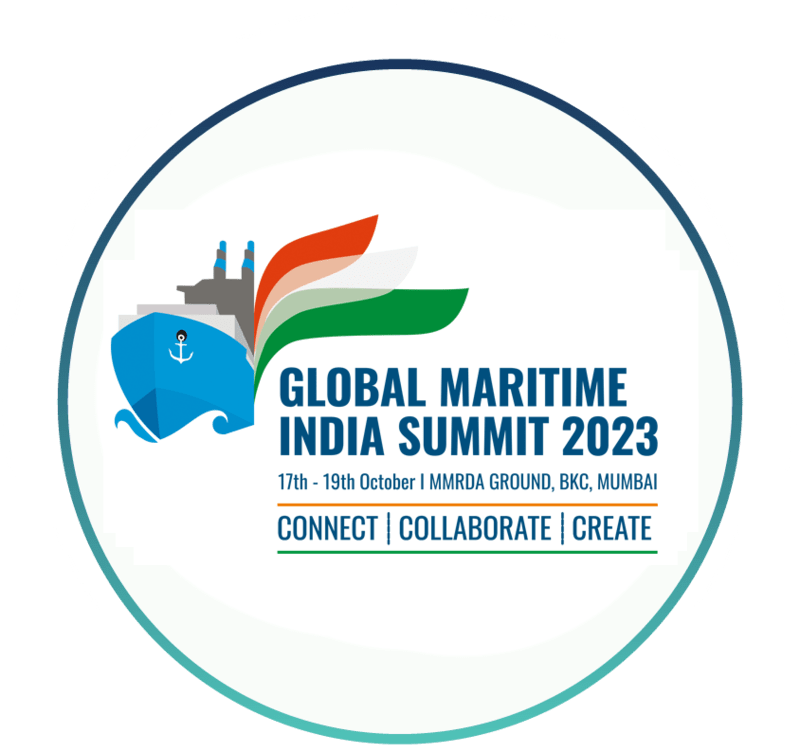GS Paper- 2 , 3
The third edition of the Global Maritime India Summit (GMIS 2023) concluded recently and was co-hosted by the Ministry of Ports, Shipping, and Waterways, in collaboration with the Indian Ports Association and the Federation of Indian Chambers of Commerce and Industry (FICCI).
About the Summit:
- The vision is to transform India into a prominent global maritime player by 2047, emphasizing sustainable growth, the blue economy, and maritime security.
- At the summit, the Prime Minister revealed 'Amrit Kaal Vision 2047,' a comprehensive plan outlining India's future in the maritime blue economy.This plan encompasses strategic actions aimed at improving port infrastructure, encouraging sustainability, and fostering international cooperation.
- Investments exceeding 10 lakh crore have been secured by India for its maritime sector as a result of the summit.
- The Global Maritime India Summit 2023 is centered around the theme “Harnessing the Blue Economy,”and its guiding principle is "Make in India – Make for the world’.
- The summit emphasized crucial aspects of the maritime industry, encompassing:
- Reduction of carbon emissions
- The development of coastal shipping and inland water transport
- The growth of cruise tourism and urban water transportation
- The enhancement of maritime professional services
- Ports of the future
- Maritime research, education, and skill development.
What is the blue economy?
The "blue economy," according to the World Bank, refers to the responsible utilization of marine resources to promote economic exp ansion, enhance people's well-being, create employment opportunities, all while safeguarding the overall health of the ocean ecosystem.
Gunter Pauli introduced the concept in his book "The Blue Economy: 10 years, 100 innovations, 100 million jobs," published in 2010.

India’s Maritime sector:
India's substantial maritime sector, which encompasses a vast coastline, both major and minor ports, a flourishing shipping industry, shipbuilding initiatives, and a significant fishing sector, is of paramount significance in fostering the nation's economic growth and development.
India's extensive coastline, stretching over 7,500 kilometers, accommodates 13 major ports and more than 200 minor ports. The maritime sector within the nation also encompasses a buoyant shipping industry, shipbuilding endeavors, and a significant fishing industry.
GDP Contribution:The maritime sector in India, either directly or indirectly, makes up approximately 5% of the nation's GDP.
Employment:The maritime sector, with its workforce of over 10 million people, presents extensive job opportunities.Primary employment opportunities exist in shipping, port activities, ship construction, and fishing, while secondary job opportunities are created in tourism, coastal expansion, and related sectors.
Trade:India's seaports handle over 95% of the country's trade in terms of volume and approximately 68% in terms of value.
- These ports function as gateways, simplifying the flow of goods and linking India with a network of over 200 countries and territories. Such trade connections are indispensable for a flourishing global economy.
- The estimated contribution of the Blue Economy to India's GDP is around 4%.
- India boasts 12 major ports and an additional 200 non-major ports.When it comes to India's primary export destinations, they include the United States, the United Arab Emirates, Saudi Arabia, Hong Kong, China, and Germany.
- The key commodities involved in this trade are petroleum products, coal, automobiles, iron ore, and more.
- Notably, two Indian ports, namely Mundra and JNPA, are ranked among the top 40 ports globally.
Challenges of the Maritime sector:
1)Oceanic Governance:India lacks a well-defined organizational framework and comprehensive regulations for activities such as offshore exploration, transportation, and storage. This deficiency hampers effective governance and oversight of maritime activities.
2)Marine Pollution:Pollution stemming from industrial waste, agricultural runoff, plastic debris, and oil spills poses a significant threat to marine ecosystems. It not only harms marine life but also degrades vital habitats, leading to disruptions in the entire marine food chain.
3)IUU Fishing:The issue of Illegal, Unreported, and Unregulated (IUU) fishing is escalating beyond India's Exclusive Economic Zone (EEZ). This unsustainable practice threatens marine biodiversity and the livelihoods of local fishermen.
4)Infrastructure Challenges:Shallow ports and underutilized port capacities are major bottlenecks in India's maritime infrastructure. These limitations affect the efficiency and competitiveness of the country's ports.
5)Connectivity Issues:The absence of expressway connections between major ports and their hinterlands results in extended turnaround times for ports and hampers India's trade competitiveness.
6)Regulatory Barriers:Many export-import (EXIM) processes remain non-digitized, leading to inefficiencies in the logistics sector. Streamlining and digitizing these processes could significantly enhance efficiency.
7)Technological Gaps:India lacks the necessary technological capabilities to harness the full potential of the blue economy. Adequate port facilities, modern maritime transportation, and advanced monitoring systems are essential for sustainable resource management.
Notable Initiatives taken by government:
- Sagarmala Program - Port led development for robust economic growth.
- Revised Model Concession Agreement - Making sector attractive for PPP.
- Major Port Authorities Act, 2021.
- Marine Aids to Navigation Act, 2021.
- Decarbonisation in the maritime sector.
- Harit Sagar Green Port guidelines
- National Logistics Portal (Marine)
- Sagar Setu app
- Indian Vessels Act, 2021
- International container transshipment port at Galathea Bay
Source
https://maritimeindiasummit.com/
https://pib.gov.in/PressReleaseIframePage.aspx?PRID=1968331



